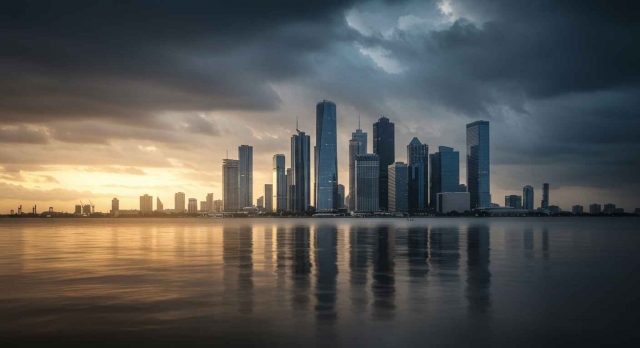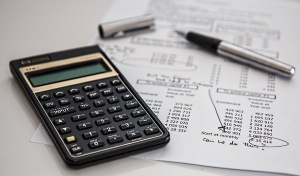Floods are among the most destructive natural hazards on Earth, and in 2025 their scale and frequency are alarming experts worldwide. From flash floods in cities to coastal storm surges and swollen rivers, disasters are occurring more often and with greater intensity. The question many are asking is: why are floods becoming more severe, and what can be done about it?
This article, Climate Change and Floods: Why Disasters Are Increasing in 2025, unpacks the science behind the trend, the human choices that amplify risks, and the challenges societies face in balancing immediate protection with long-term solutions.
Why Floods Are Increasing: The Science Behind the Trend
1. Warmer Air Means Heavier Rainfall
A hotter atmosphere holds more water vapor. When storms occur, this extra moisture is released as torrential rain. Records already show a rise in extreme precipitation across many regions, raising the likelihood of flash floods and overwhelmed drainage systems.
2. Shifting Storm Patterns
Climate change is altering monsoons, cyclones, and storm tracks. Rainfall is lasting longer and falling more intensely in some areas, dramatically increasing flood risk. Advanced satellite studies confirm that many regions are now facing extreme rainfall events at an unprecedented rate.
Just as communities prepare for floods with modern tools, mosques and charities are also adopting solutions like Donation Tablets, making giving more transparent and convenient.
3. Rising Seas and Coastal Risk
Global sea levels are climbing, turning once-rare coastal floods into regular threats. Combined with stronger storms, higher seas mean more property damage and greater numbers of people at risk. Some insurers have already warned that parts of coastal cities may soon become uninsurable.
4. Rapid Urbanization
Urban sprawl is spreading into floodplains and low-lying areas. With more concrete and asphalt reducing natural drainage, even moderate rain can trigger severe urban flooding. Developing regions are especially vulnerable, as infrastructure often lags behind population growth.
Human and Social Drivers That Make Floods Worse
-
Population growth in hazard zones: More people and assets are concentrated in flood-prone areas.
-
Aging infrastructure: Many levees, dams, and drainage systems are outdated and unable to handle today's extremes.
-
Social inequality: Poorer communities often live in the riskiest places, with limited resources to prepare or recover.
These factors mean that while climate change drives the hazard, society's choices magnify the damage.
Mitigation vs. Adaptation: The Tradeoffs
Mitigation (Reducing Greenhouse Gas Emissions)
-
Pros: Slows warming, stabilizes climate, and reduces long-term flood risks.
-
Cons: Results take decades; near-term floods are already locked in.
Like the simplicity of Donation Tablets that make support immediate, adaptation offers practical steps communities can take now.
Adaptation (Building Resilience Today)
-
Pros: Flood defenses, resilient housing, and early warning systems save lives right away.
-
Cons: Expensive, sometimes unsustainable, and often needs repeating as climate extremes intensify.
The reality is that both strategies are essential—cutting emissions for the future while adapting for the present.
Challenges in Managing Flood Risks
-
Hard Infrastructure (levees, dams, sea walls): Effective for cities but costly, ecologically damaging, and vulnerable to failure.
-
Nature-Based Solutions (wetlands, floodplains): Provide natural protection and biodiversity benefits, but need space and may not suffice for extreme events.
-
Community Preparedness & Early Warnings: Affordable and life-saving, but depend on public trust and reliable communication.
-
Financial Tools (insurance, risk-sharing): Help spread recovery costs, yet rising risks are driving premiums higher and making coverage unaffordable.
The Wider Impacts on Society and Industry
Public Health and Displacement
Floodwaters spread disease, worsen respiratory issues from mold, and trigger mental health challenges. Repeated displacement undermines community resilience and stability.
With Donation Tablets, communities can mobilize support quickly and securely—helping recovery efforts stay strong even after disaster strikes.
Economic Costs
Floods damage homes, infrastructure, farms, and factories, disrupting supply chains and increasing global costs. Studies confirm that floods account for a major share of disaster-related losses worldwide.
Insurance and Housing Challenges
Rising premiums and disappearing coverage are putting financial pressure on families and governments. Some regions face difficult choices: retreat from risky zones, invest in stronger defenses, or absorb repeated losses.
Urban Planning and Migration
Persistent flooding could force entire communities to relocate. Policymakers must weigh tough tradeoffs between safety, economics, and social stability.
Building Resilience in 2025
The path forward requires a layered approach:
-
Integrated Flood Management: Combine infrastructure, natural defenses, and policy.
-
Targeted Investment: Prioritize vulnerable communities for infrastructure upgrades and disaster response.
-
Technology and Forecasting: Use satellites, AI, and real-time monitoring to predict and manage floods.
-
Insurance Reform: Create adaptive, affordable risk-sharing systems.
-
Community Engagement: Local voices and knowledge ensure effective, trusted preparedness plans.
Conclusion
Climate Change and Floods: Why Disasters Are Increasing in 2025 is not a single-issue story. It is the intersection of natural forces—warmer air, stronger storms, rising seas—with human decisions about where we live, how we build, and how resources are shared.
The evidence is clear: floods are worsening, and the costs of inaction are already mounting. The best path forward combines urgent mitigation to slow climate change with practical adaptation to protect communities today.
Floods in 2025 are more than natural disasters—they are a test of governance, resilience, and collective action. How we respond now will shape the safety and sustainability of generations to come.






